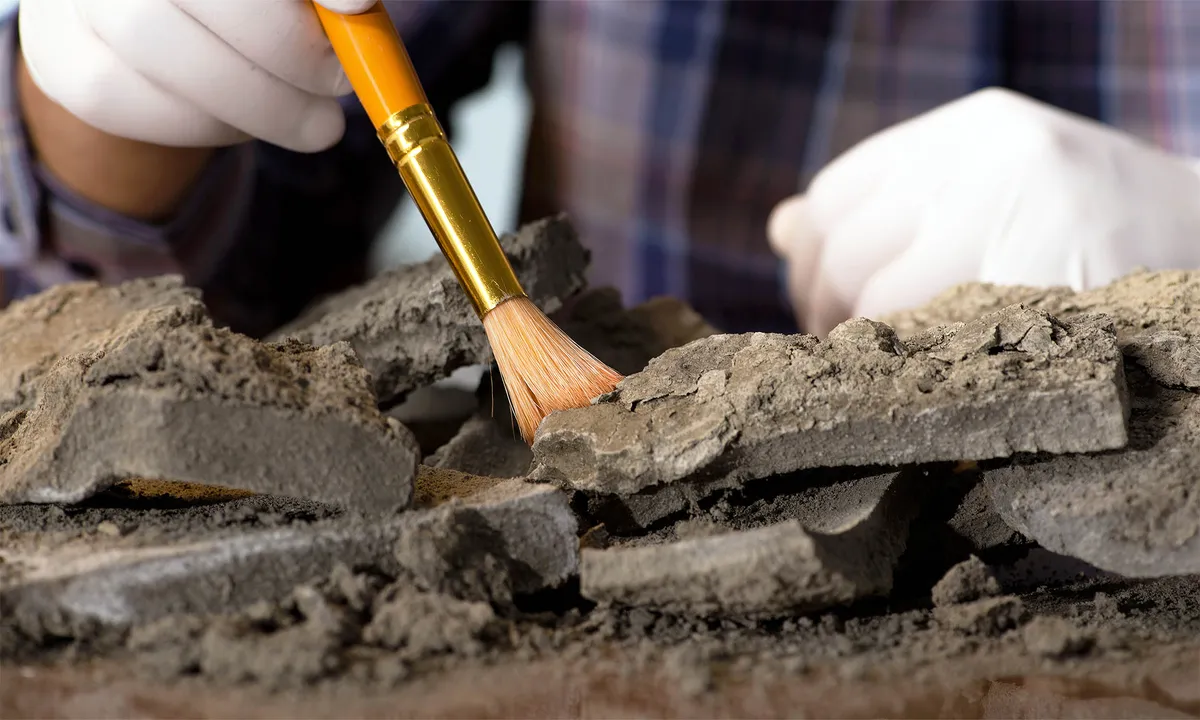
The Cambrian period, which occurred around 520 million years ago, marked an era rich in evolutionary experimentation. During this time, life in the seas was exploring various body plans, seeking the most effective combinations for survival. Among these experimental life forms, a particular group known as the euarthropods emerged as a successful design. Characterized by their segmented bodies and paired jointed limbs, these creatures adeptly adapted their appendages into claws, feelers, and walking legs. This foundational body plan continues to influence modern insects, spiders, and crabs.
Historically, most evidence regarding the early success of euarthropods has been derived from flattened fossil impressions, compressed by millions of years of sediment. These ancient relics provided outlines of life forms but often concealed the intricate details of their anatomy. However, a groundbreaking discovery has emerged in the form of a newly described fossil larva named Youti yuanshi. Preserved in three dimensions and no larger than a poppy seed, this exceptional fossil has opened new avenues for understanding the early stages of insect evolution.
The fossil Youti yuanshi transports us back to the Cambrian period, a critical time when many of the major animal groups we recognize today were beginning to evolve. Classified within the group of arthropods, which encompasses modern insects, spiders, and crabs, this fossil stands out due to its remarkable preservation of internal organs. This unique preservation offers an unprecedented glimpse into the anatomy of ancient life forms.
Utilizing state-of-the-art synchrotron X-ray tomography at the Diamond Light Source, the UK’s national synchrotron science facility, the research team successfully generated 3D images of this minute marvel. These images reveal intricate structures, including brain regions, digestive glands, a rudimentary circulatory system, and even traces of nerves that supplied the larva’s simplistic legs and eyes.
This research represents a significant revelation regarding the anatomy of early arthropod ancestors. Dr. Martin Smith, who led the study from Durham University, expressed his excitement, stating, “When I used to daydream about the one fossil I’d most like to discover, I’d always be thinking of an arthropod larva. The developmental data are critical to understanding their evolution.” He was astonished by the intricate anatomical features preserved within the fossil, which raises questions about how such delicate structures could survive for nearly half a billion years.
Dr. Katherine Dobson from the University of Strathclyde, another key contributor, emphasized the significance of this discovery. “It’s always interesting to see what’s inside a sample using 3D imaging, but in this incredible tiny larva, natural fossilization has achieved almost perfect preservation,” she noted. The insights gained from Youti yuanshi are vital for unraveling the evolutionary history of multi-limbed creatures. The fossil reveals an ancestral ‘protocerebrum’ brain region, which played a crucial role in the evolution of complex, segment-headed organisms.
The discovery of Youti yuanshi not only illuminates the evolution of early arthropods but also invites broader reflections on biodiversity and the intricate web of evolutionary relationships that have shaped life on Earth. By understanding the anatomical features and adaptations of extinct species, we gain valuable context for the diverse forms of life we observe today. This fossil serves as a poignant reminder of the resilience and adaptability of life throughout history, highlighting the importance of preserving our current ecosystems.
The insights gleaned from Youti yuanshi are paving the way for exciting new research opportunities in evolutionary biology, paleontology, and developmental biology. Researchers are eager to delve deeper into Cambrian period fossils, with the hope of uncovering more specimens that reveal the complexities of early life forms. Moreover, the techniques employed in this study, such as synchrotron X-ray tomography, could be utilized to enhance our understanding of other fossils, contributing to the narrative of the tree of life.
This diminutive fossil proves that even the smallest discoveries can challenge long-held assumptions about evolution. Future excavations, coupled with advanced imaging technologies, are likely to uncover additional remnants from deep time, each poised to reveal another chapter in the story of our planet's earliest animal life. Currently, this remarkable fossil is housed at Yunnan University in China, its original discovery site, emphasizing the pivotal role of fossils in understanding our evolutionary roots.
This groundbreaking study has been published in the journal Nature, underscoring the critical importance of fossil research in unraveling the mysteries of life's evolution on Earth.
—– Like what you read? Subscribe to our newsletter for engaging articles, exclusive content, and the latest updates. Check us out on EarthSnap, a free app brought to you by Eric Ralls and Earth.com. —–